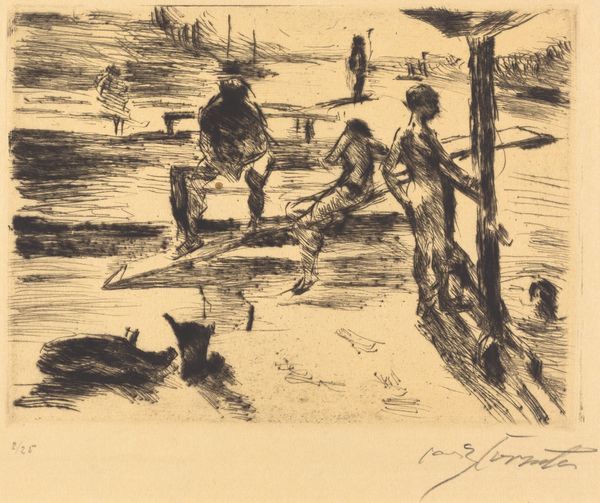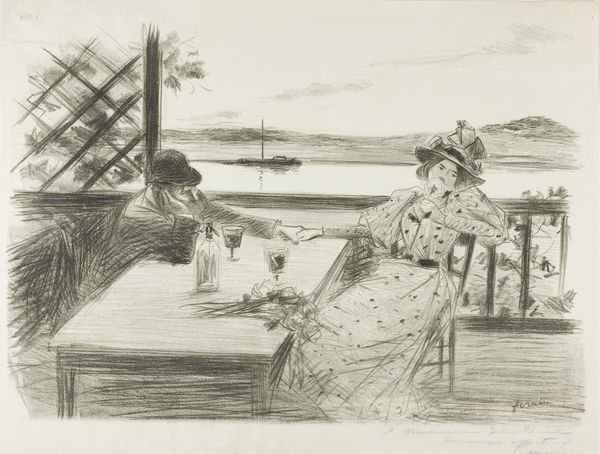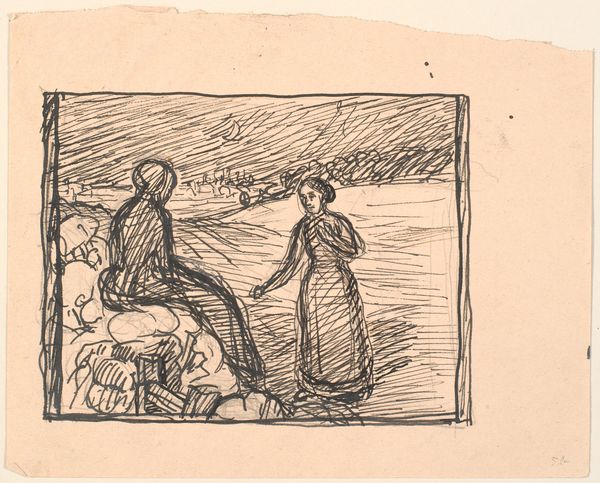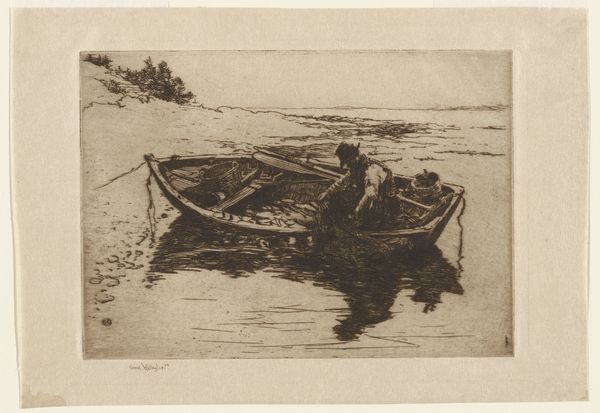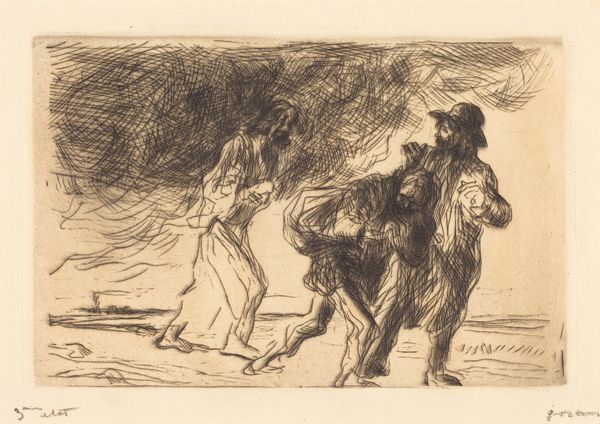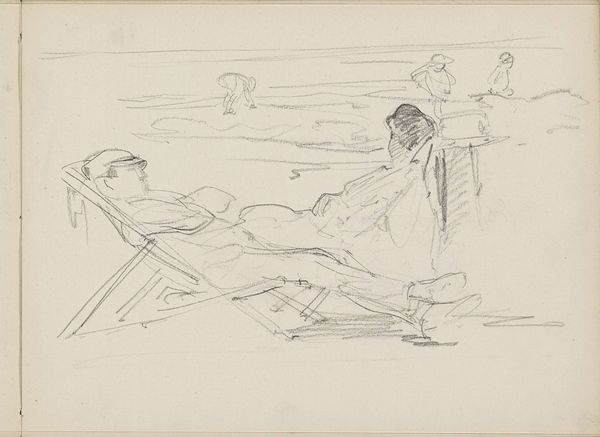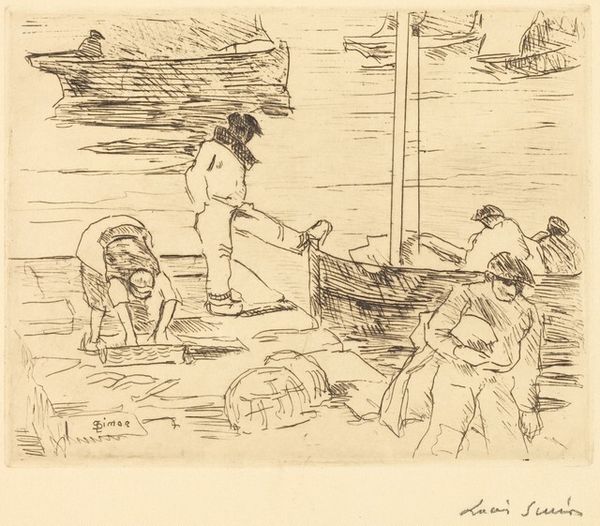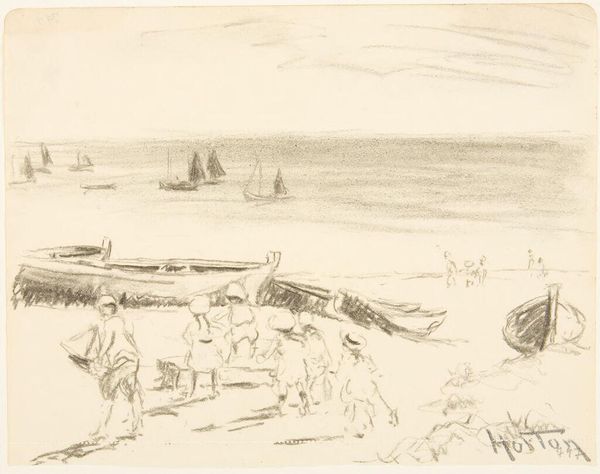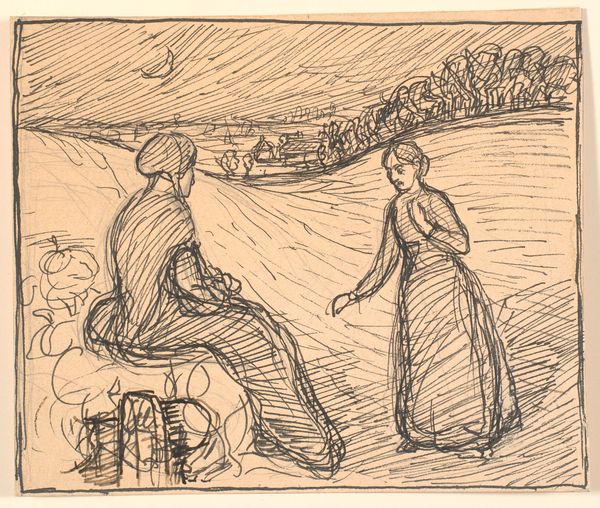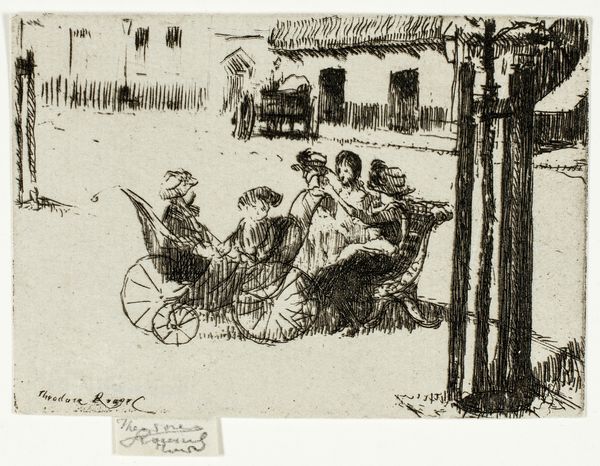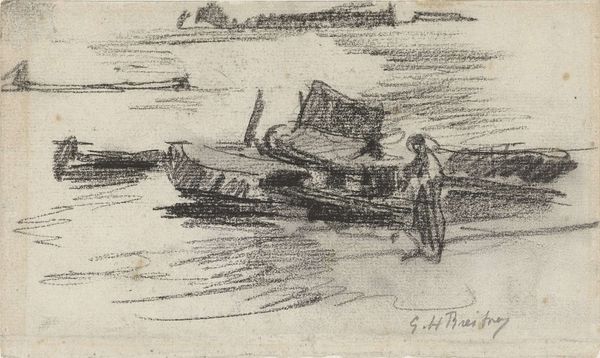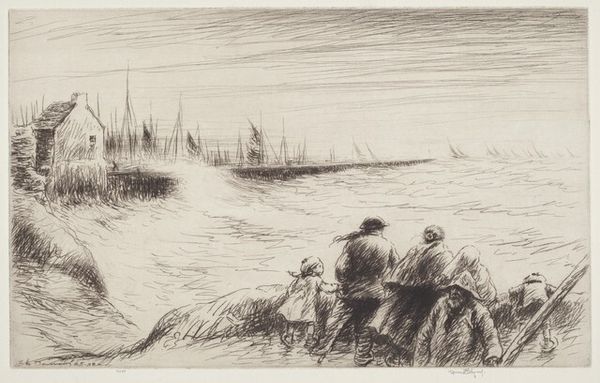
#
landscape illustration sketch
#
amateur sketch
#
light pencil work
#
quirky sketch
# print
#
pen sketch
#
pencil sketch
#
idea generation sketch
#
pen-ink sketch
#
fantasy sketch
#
initial sketch
Dimensions: image: 14.5 x 20 cm (5 11/16 x 7 7/8 in.) sheet: 44.5 x 35.8 cm (17 1/2 x 14 1/8 in.)
Copyright: National Gallery of Art: CC0 1.0
Editor: Here we have Max Liebermann's "Canoeing" from 1919, a print depicting two figures in a canoe. There’s another, smaller canoe in the background. The sketchiness creates this impression of a fleeting, almost dreamlike moment. What strikes you about this work? Curator: Liebermann made this in 1919, right after WWI and the German Revolution, a time of profound social upheaval. While Impressionism often focused on capturing a specific moment, I wonder if here Liebermann uses it to depict something more symbolic. Note how the composition emphasizes the isolation of the figures within the vastness of the water, using print, a highly reproducible medium. Does it evoke the uncertain state of things in Germany at that moment? Editor: That’s an interesting point! I hadn't considered the socio-political climate. The 'sketchiness' now seems less carefree and more reflective of instability. But I thought Liebermann was more about pure aesthetic experience. Curator: That's the traditional narrative, and we should also ask whose narrative is that? Think about how art history itself is constructed. Museums, galleries, even academic institutions contribute to how we interpret and value art. "Canoeing" exists, importantly, as a *print*, produced and disseminated among the populace in editions like the one labelled "7/40" in the corner here, and consumed differently, perhaps more politically, than, say, one of his unique oil paintings. Editor: So you’re suggesting that the medium itself – a print made at a specific time - invites us to consider the broader social and political implications, beyond the idyllic scene. Curator: Exactly! Consider the role of art during times of great social change. Is it merely decorative, or can it reflect, even shape, public consciousness? Editor: That perspective shifts my understanding completely! I’m starting to see this as more than just a pretty picture, and more as an artwork engaged in its time. Curator: Indeed. Thinking about the broader context allows us to appreciate not only the aesthetic qualities but the artwork’s complex relationship with society.
Comments
No comments
Be the first to comment and join the conversation on the ultimate creative platform.
